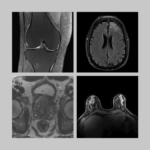In new research, scientists at NYU Langone Health propose “MP-Grasp4D MRI”—an imaging technique that delivers fast, high-quality MRI in the presence of respiratory motion. The technique is named after its initial step known as magnetization preparation (MP), its main component called GRASP, and the fact that it delivers four-dimensional (4D) data (three spacial dimensions plus time).
In a study published in August in the journal NMR in Biomedicine, the research team compares the new technique to regular four-dimensional GRASP by imaging the liver in healthy controls and in people with nonalcoholic fatty liver disease. The images are then evaluated by clinical radiologists according to several criteria.
The advance is but the latest example of the continued development of GRASP, a method originally created at NYU Langone’s Center for Advanced Imaging Innovation and Research about a decade ago that has since become available on MRI scanners worldwide. A key attribute of GRASP is its high tolerance for motion, which allows patients to breathe normally in the scanner (whereas conventional techniques require patients to perform repeated breath holds during the imaging exam).
The authors find that MP-Grasp4D MRI “preserves image contrast and quality” in scans as short as three minutes, “demonstrating additional acceleration capability.” The technique “improves T1-weighted contrast for free-breathing time-resolved 4D MRI and eliminates the need for explicit motion compensation,” they write, adding that this extension has the potential to be “valuable in different MRI applications such as MR-guided radiotherapy.”
“GRASP can go beyond fast imaging—it can provide a better way, or a new way, to do MRI in general,” said Li Feng, PhD, one of the inventors of GRASP and the senior author of the new study said in a Lab Talk interview last year. “And right now, we’re trying to further optimize and develop different variants and deliver more information, more accurate information, and new information.”
A version of this post first appeared on the CAI2R LinkedIn.
Related Publication
Free-breathing time-resolved 4D MRI with improved T1-weighting contrast.
NMR Biomed. 2024 Dec;37(12):e5247. doi: 10.1002/nbm.5247
Related Story
Li Feng, developer of fast MRI techniques, talks about going beyond speed, his path to academia, and the rewards of persistence.
Related Resources
Respiratory motion compensation, automatic bolus timing, and coil-weighted unstreaking for GRASP.
Raw k-space data and DICOM images from thousands of MRI scans of the knee, brain, and prostate, curated for machine learning research on image reconstruction.
A reconstruction method that sorts dynamic data into motion states in accelerated MRI.
Reconstruction code for fast and flexible free-breathing dynamic volumetric MRI.




